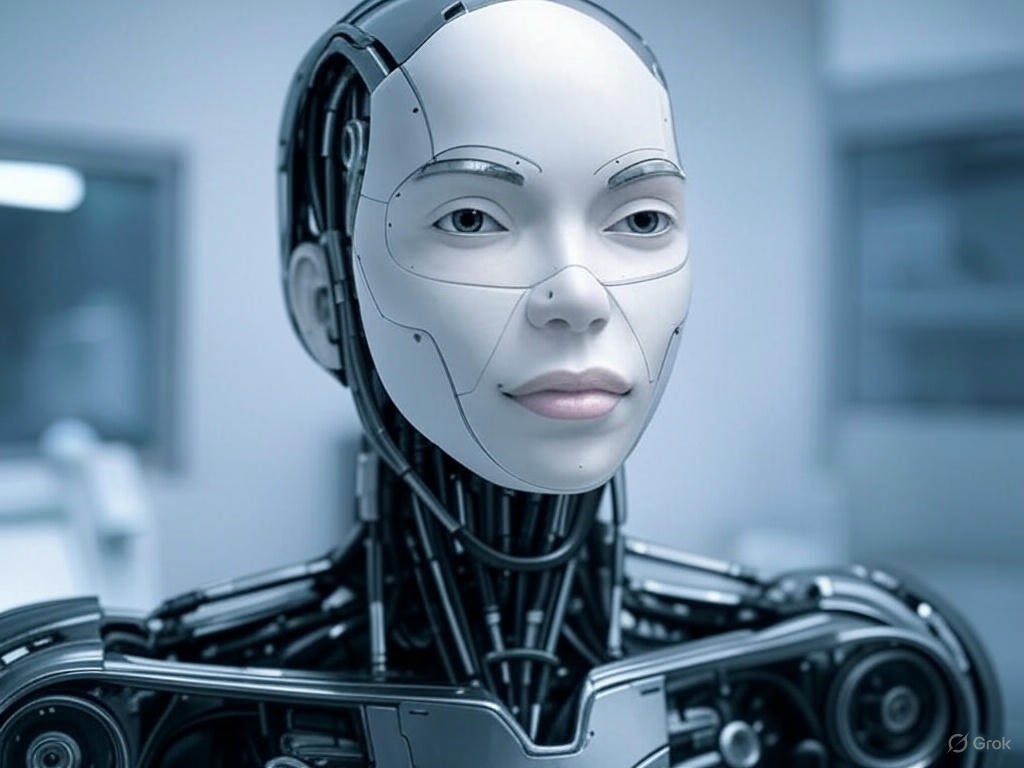Artificial Intelligence (AI) Vs. Machine Learning (ML) Vs. Deep Learning Vs. Natural Language Processing (NLP) Vs. Computer Vision
Category: AI | 24th July 2023, Monday

Artificial Intelligence (AI), Machine Learning (ML), Deep Learning, Natural Language Processing (NLP), And Computer Vision Are All Interconnected Fields Within The Broader Domain Of Artificial Intelligence. While They Share Some Commonalities, Each Of These Areas Has Its Unique Characteristics And Applications. In The Following Discussion, We Will Delve Into The Differences Between These Concepts, Highlighting Their Definitions, Methodologies, And Applications.
Artificial Intelligence (AI):
Artificial Intelligence Is A Broad Field That Encompasses The Development Of Intelligent Systems Capable Of Performing Tasks That Would Typically Require Human Intelligence. AI Aims To Simulate Human-like Thinking And Decision-making Processes. It Involves The Creation Of Algorithms And Models That Enable Machines To Perceive, Reason, Learn, And Make Decisions. AI Can Be Divided Into Two Categories: Narrow AI And General AI. Narrow AI Focuses On Specific Tasks And Is Prevalent In Various Applications Today, While General AI Refers To Machines That Possess Human-like Intelligence Across A Wide Range Of Tasks.
Machine Learning (ML):
Machine Learning Is A Subset Of AI That Focuses On The Development Of Algorithms And Models That Allow Computers To Learn And Improve From Experience Without Being Explicitly Programmed. ML Algorithms Analyze Large Datasets To Identify Patterns And Make Predictions Or Decisions Based On Those Patterns. It Relies On Statistical Techniques To Automatically Learn From Data And Adapt Its Performance. ML Can Be Categorized Into Three Types: Supervised Learning, Unsupervised Learning, And Reinforcement Learning.
Deep Learning:
Deep Learning Is A Subfield Of ML That Employs Artificial Neural Networks To Model And Understand Complex Patterns And Relationships Within Data. Deep Learning Algorithms Are Inspired By The Structure And Function Of The Human Brain, Consisting Of Multiple Layers Of Interconnected Nodes (neurons). These Networks Are Capable Of Learning Hierarchical Representations Of Data, Enabling Them To Extract High-level Features From Raw Input. Deep Learning Has Achieved Significant Breakthroughs In Various Domains, Including Computer Vision And Natural Language Processing.
Natural Language Processing (NLP):
Natural Language Processing Is A Branch Of AI That Focuses On The Interaction Between Computers And Human Language. NLP Enables Machines To Understand, Interpret, And Generate Human Language In A Way That Is Meaningful And Useful. It Involves A Range Of Tasks, Including Text Classification, Sentiment Analysis, Language Translation, Question-answering, And Speech Recognition. NLP Utilizes Techniques From Linguistics, Machine Learning, And Deep Learning To Process And Analyze Textual Data.
Computer Vision:
Computer Vision Involves The Development Of Algorithms And Models That Enable Machines To Gain An Understanding Of Visual Information From Images Or Videos. It Aims To Replicate Human Vision By Extracting Meaningful Information From Visual Data And Making Inferences Or Taking Actions Based On That Information. Computer Vision Tasks Include Object Detection, Image Recognition, Image Segmentation, And Video Analysis. It Utilizes Techniques Such As Image Processing, Pattern Recognition, And Deep Learning To Extract Features And Make Sense Of Visual Data.
In Summary, AI Is The Broader Concept Of Creating Intelligent Machines, While ML, Deep Learning, NLP, And Computer Vision Are Specific Subfields Within AI. ML Focuses On Algorithms That Allow Computers To Learn And Make Predictions From Data. Deep Learning Employs Artificial Neural Networks To Model Complex Patterns. NLP Enables Machines To Understand And Generate Human Language, While Computer Vision Focuses On Processing And Understanding Visual Information. These Fields, Although Distinct, Often Intersect And Complement Each Other, Leading To Advancements In AI Technology And Applications Across Various Industries.
Modernizing OLAP And BI With AtScale + Google BigQuery
Join This AtScale Tech Talk To Explore Innovative Approaches In Low-latency Business Intelligence Reporting Across Retail, Supply Chain, Financial Services, And Insurance.
AtScale And Google BigQuery Provide Fast And Simplified Data Querying, Empowering Teams To Make Data-driven Decisions Using Familiar Tools Like Excel And Power BI.
Computer Vision:
Computer Vision Focuses On Enabling Machines To Gain An Understanding Of Visual Information From Images Or Videos. It Involves The Development Of Algorithms And Models That Allow Computers To Perceive, Analyze, And Interpret Visual Data. Computer Vision Tasks Include Image Classification, Object Detection, Image Segmentation, And Facial Recognition. Techniques Such As Image Preprocessing, Feature Extraction, And Pattern Recognition Are Employed To Process Visual Data And Extract Meaningful Information. Deep Learning Models, Especially Convolutional Neural Networks (CNNs), Have Revolutionized Computer Vision By Achieving State-of-the-art Performance In Various Visual Recognition Tasks.
While There Are Distinct Differences Between These Concepts, They Are Interrelated And Often Used In Conjunction To Create Advanced AI Systems. For Example, AI Systems May Employ ML Algorithms, Particularly Deep Learning Models, To Analyze And Interpret Data From Different Modalities Such As Text, Images, And Speech. NLP And Computer Vision Techniques Can Be Integrated Into AI Systems To Enable More Comprehensive And Multimodal Understanding Of Data. Furthermore, The Advancements In ML And Deep Learning Have Significantly Contributed To The Progress Of AI As A Whole, Making It Possible To Tackle Complex Tasks And Achieve Higher Levels Of Performance Across Various Domains.
In Conclusion, AI Represents The Broader Goal Of Creating Intelligent Systems, While ML, Deep Learning, NLP, And Computer Vision Are Specific Subfields Within AI That Specialize In Different Aspects Of Intelligence. These Areas Continue To Advance Rapidly, With New Algorithms, Models, And Applications Being Developed Regularly. Their Combined Efforts Are Driving Innovation And Shaping The Future Of AI, With Implications For A Wide Range Of Industries And Societal Domains.
Tags:
AI, Artificial Intelligence
